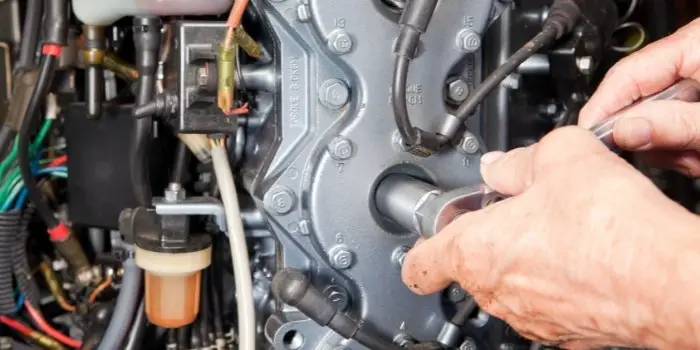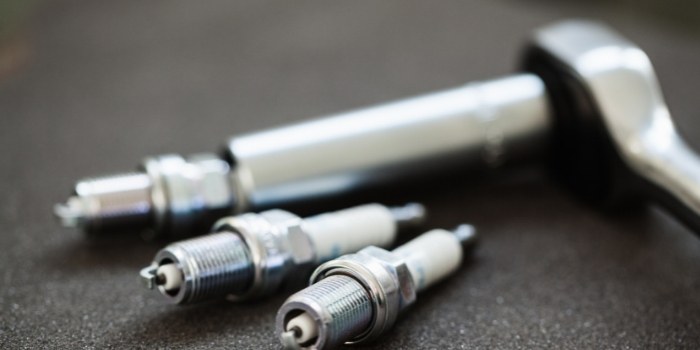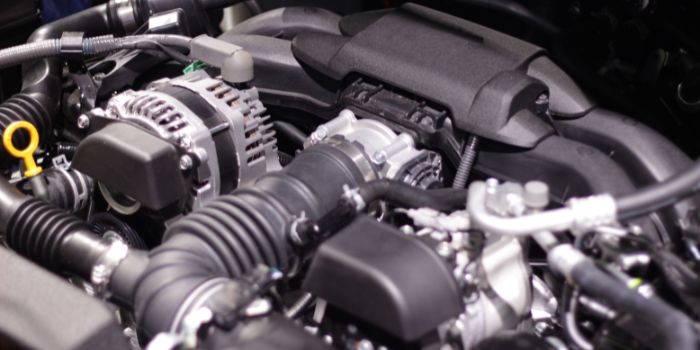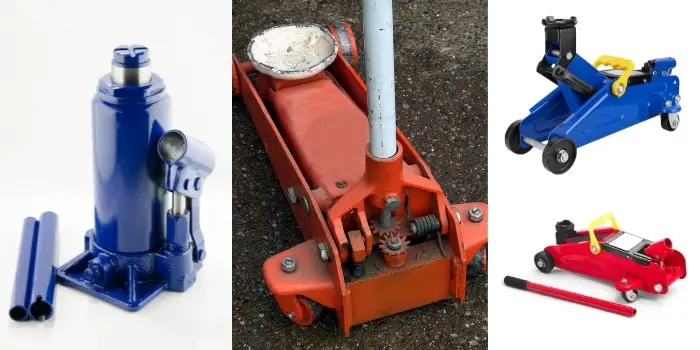
Spark plugs are an essential component of a car’s engine. They are responsible for igniting the gasoline-air mixture that causes combustion, which is what produces energy to turn the engine and keep cars running smoothly.
To explain further, spark plugs have electrodes at their end where electricity from the battery is sent through, producing a spark.
The spark then travels to the combustion chamber, where it combusts with fuel and air, setting off a chain reaction that allows for power to be produced through the engine.
Without this process, as provided by spark plugs, cars would not function properly, and engines could not run.
Spark plugs are not a very delicate component of an automobile, but they may fail if you are careless.
What causes spark plugs to fail quickly?
Well, there can be many reasons for it, and in this guide, we’ll walk through the most common spark plug problems, their fixes, how spark plugs affect engine performance, and when it’s time to replace them.
Whether you’re curious about how to check spark plugs or wondering what a bad spark plug looks like, this article will clear the smoke.
Understanding Spark Plugs in Cars
Think of spark plugs as the lighters inside your engine. Their job is to ignite the compressed air-fuel mixture at precisely the right moment — typically thousands of times per minute.
When they’re working well:
- You get smooth acceleration
- Efficient fuel burn
- Strong power output
- Lower emissions
But when they start failing:
- Combustion becomes inconsistent
- Fuel economy drops
- Power declines
- Misfires and carbon buildup rise
The plug’s condition directly impacts how the engine breathes, burns, and performs. That’s why knowing how to check spark plugs regularly is key to a healthy engine.
Common Spark Plug Symptoms in a Car
When your car starts sputtering like it had one too many espressos, there’s a good chance your spark plugs are begging for attention.
Following are some issues I’ve experienced that caused spark plugs to wear out rapidly.
1. Hard Starting or No Start at All
When your engine cranks but refuses to start, worn-out spark plugs are a prime suspect. The spark they produce might be too weak to ignite the fuel mixture — especially in cold weather.
Why does it happen:
- Excessive carbon buildup on the electrodes
- Cracked ceramic insulator
- Improper spark gap
Fix:
Remove and inspect the plug. If you see heavy deposits or cracks, replace it. For mild buildup, clean it with a wire brush.
Always check the manufacturer’s recommended gap (use a spark plug gap tool). If the issue persists, also inspect the ignition coils.
2. Engine Misfiring
An engine misfire feels like your car’s heartbeat suddenly skips. It’s often caused by inconsistent or missing sparks in one or more cylinders.
Spark plug misfire causes:
- Fouled or oily plugs
- Damaged ignition coil
- Incorrect gap or plug type
Fix:
Start by pulling out each plug to tell if a spark plug is bad. A black, oily, or sooty plug is a red flag.
Clean light fouling with carb cleaner; otherwise, replace. Make sure coil connections are tight, and check that all plugs are properly torqued.
3. Poor Acceleration
If your car feels lazy when you step on the gas, weak spark plugs might be to blame. They fail to ignite fuel efficiently, resulting in slow throttle response.
Why does it happen:
- Weak spark output
- Dirty or worn electrodes
- Incorrect heat range
Fix:
Switch to fresh plugs or upgrade to iridium spark plugs — they offer a stronger, cleaner burn and last longer.
Verify that the plugs match your car’s heat range rating (too hot or too cold can both hurt performance).
4. Rough Idling
Your car shouldn’t feel like it’s purring on gravel. A bad spark plug can make idling uneven and jittery.
Why does it happen:
- Uneven spark timing
- Carbon deposits blocking consistent ignition
Fix:
Clean or replace the plugs. Run a fuel system cleaner through your tank to help remove carbon buildup in the combustion chamber. If idle remains unstable, recheck ignition timing and air intake sensors.
5. Engine Knocking or Pinging
That metallic “ping-ping” noise isn’t music to your ears — it’s a sign your spark plugs are firing at the wrong time or burning fuel unevenly.
Why does it happen:
- Overheated or incorrect plug type
- Pre-ignition due to deposits
- Lean air-fuel mixture
Fix:
Inspect plugs for white or blistered tips — that’s a classic overheating sign. Replace with plugs of the correct heat range. Also, check the timing and ensure you’re using the right octane fuel.
6. Drop in Fuel Efficiency
When spark plugs wear out, your engine has to work harder, guzzling more gas for less power.
Why does it happen:
- Incomplete combustion due to weak spark
- Incorrect spark gap
- Deposits on electrodes
Fix:
Replace the plugs and ensure the gaps are set properly. Regularly cleaning or replacing your air filter and checking fuel injectors will further improve combustion efficiency.
7. Engine Surging or Hesitation
When you accelerate and the car suddenly jerks or hesitates, your plugs may be firing inconsistently.
Why does it happen:
- Poorly seated spark plug wires
- Moisture inside the plug well
- Fouled plugs disrupting timing
Fix:
Dry the plug wells and apply dielectric grease to plug boots to prevent moisture. Re-seat all wires securely. If the problem continues, swap in new plugs and inspect ignition coils.
8. Check Engine Light On
A bad spark plug can trigger the dreaded Check Engine Light. Misfires cause oxygen sensor and catalytic converter readings to go haywire.
Why does it happen:
- Continuous misfires detected by the ECU
- Weak or intermittent spark signal
Fix:
Use an OBD-II scanner to confirm “misfire” codes (often P0300–P0306). Replace the affected plugs and clear the code. If it reappears, check ignition coils or the crankshaft position sensor.
9. Vibrations During Acceleration
If your steering wheel or pedals shake when you press the gas, it might be spark plug imbalance between cylinders.
Why does it happen:
- Unequal spark output
- One or more dead plugs
- Coil-on-plug issues
Fix:
Check each plug individually. Compare color and wear. If one looks drastically different (wet, dark, or eroded), replace it. Balance the set by installing a full matching batch.
10. Increased Emissions
A faulty spark plug causes incomplete combustion — releasing excess hydrocarbons and CO into the exhaust.
Why does it happen:
- Poor ignition
- Carbon fouling
- Plug gap too wide
Fix:
Replace fouled plugs, and consider fuel additives to clean injectors. Regular maintenance ensures emissions stay in check and helps pass inspection tests.

What Size Socket Do I Need to Change Spark Plugs?
A spark plug socket is a special deep socket designed to remove and install spark plugs without damaging them.
Unlike regular sockets, it has a rubber or magnetic insert that grips the spark plug’s ceramic body securely, preventing it from slipping or cracking during removal.
You’ll typically use it with a ratchet wrench and an extension bar to reach deep into the engine.
Most cars use either a 5/8-inch (16mm) or 13/16-inch (21mm) spark plug socket.
For example, vehicles like the Honda Civic, Toyota Camry, Ford F-150 (V6 engines), and Hyundai Elantra usually need a 5/8″ socket, while older models such as the Chevrolet Silverado V8, Dodge Ram 1500, or older BMWs may require a 13/16″ socket.
Some smaller engines and motorcycles use a 9/16″ (14mm) socket instead.
If you’re buying one, go for a magnetic or swivel-style spark plug socket — they make the job easier, especially in tight spaces.
Always check your vehicle’s owner’s manual or the plug’s hex size before purchasing, as using the wrong socket could strip the plug or damage the threads.
| Spark Plug Hex Size | Socket Size You Need | Common Vehicles |
|---|---|---|
| 5/8 inch (16 mm) | 5/8″ spark plug socket | Most modern cars (Honda, Toyota, Ford, GM, etc.) |
| 13/16 inch (21 mm) | 13/16″ spark plug socket | Older American cars, some trucks |
| 9/16 inch (14 mm) | 9/16″ spark plug socket | Some small engines and newer turbo engines |

Fixing vs. Replacing a Faulty Spark Plug on a Car — When to Seek Professional Help?
Cleaning and re-gapping old spark plugs can fix minor performance dips. However, replacement is often a better long-term move — especially for modern engines that run hotter and leaner.
When Fixing Works:
- Light carbon buildup
- Minor gap misalignment
- Dry fouling (non-oily deposits)
When to Replace:
- Cracked or broken ceramic
- Oil-fouled or blistered electrodes
- Severe wear or erosion
- Misfires persist even after cleaning
DIY or Professional?
If you’re comfortable using a torque wrench and have easy access to your spark plugs, DIY replacement is fine.
But for transverse or turbo engines (where plugs are buried deep), let a mechanic handle it — cross-threading or over-torquing can cause expensive head damage.
When in doubt, consult a certified technician. They can also inspect coil packs and ignition timing — areas often overlooked in simple plug swaps.
FAQs About Spark Plug Problems
How often should I replace spark plugs?
Most modern copper plugs last around 20,000–30,000 miles, while Iridium Spark Plugs can last up to 100,000 miles. Always follow your car manufacturer’s schedule.
What does a bad spark plug look like?
A bad spark plug looks like it’s been through a war — black carbon coating, oily residue, or a white blistered tip. Healthy plugs should have a light tan or grayish electrode.
Can I drive with a bad spark plug?
Technically, yes, but it’s a bad idea. You’ll lose power, burn extra fuel, and could damage your catalytic converter from unburned fuel.
Will new spark plugs improve performance?
Absolutely. Fresh plugs ensure consistent combustion, quicker starts, smoother idling, and improved mileage. You’ll likely notice better throttle response right away.
How do I tell if a spark plug is bad without removing it?
A scan tool can detect misfire codes or uneven RPMs. You might also notice rough idling, poor fuel economy, or a check-engine light — all hints your spark plugs need attention.
Final Thoughts
Spark plugs may be small, but they pack a huge punch in engine performance. From ensuring clean combustion to maximizing power and efficiency, they’re the unsung heroes under your hood.
If your car feels sluggish, rough, or gas-hungry, don’t ignore the signs — it might just be a worn-out plug calling for help. Learn how to check them, replace them on time, and your car will reward you with smoother rides and fewer repair bills.
When in doubt, consult a mechanic — but for many DIYers, changing spark plugs is one of the most satisfying and rewarding maintenance jobs you can do yourself.

Based in Orem (Utah) John Paterson graduated from Utah Valley University and has begun writing in 2009. He has a large wealth of experience in writing articles related to cars, automotive repair, wheels, cleaning/maintenance, and much more. He has also written instructional articles in a similar niche for a few online publications as well. Currently, he works as a mechanic in his personal garage shop where he loves serving his countrymen from his heart.




